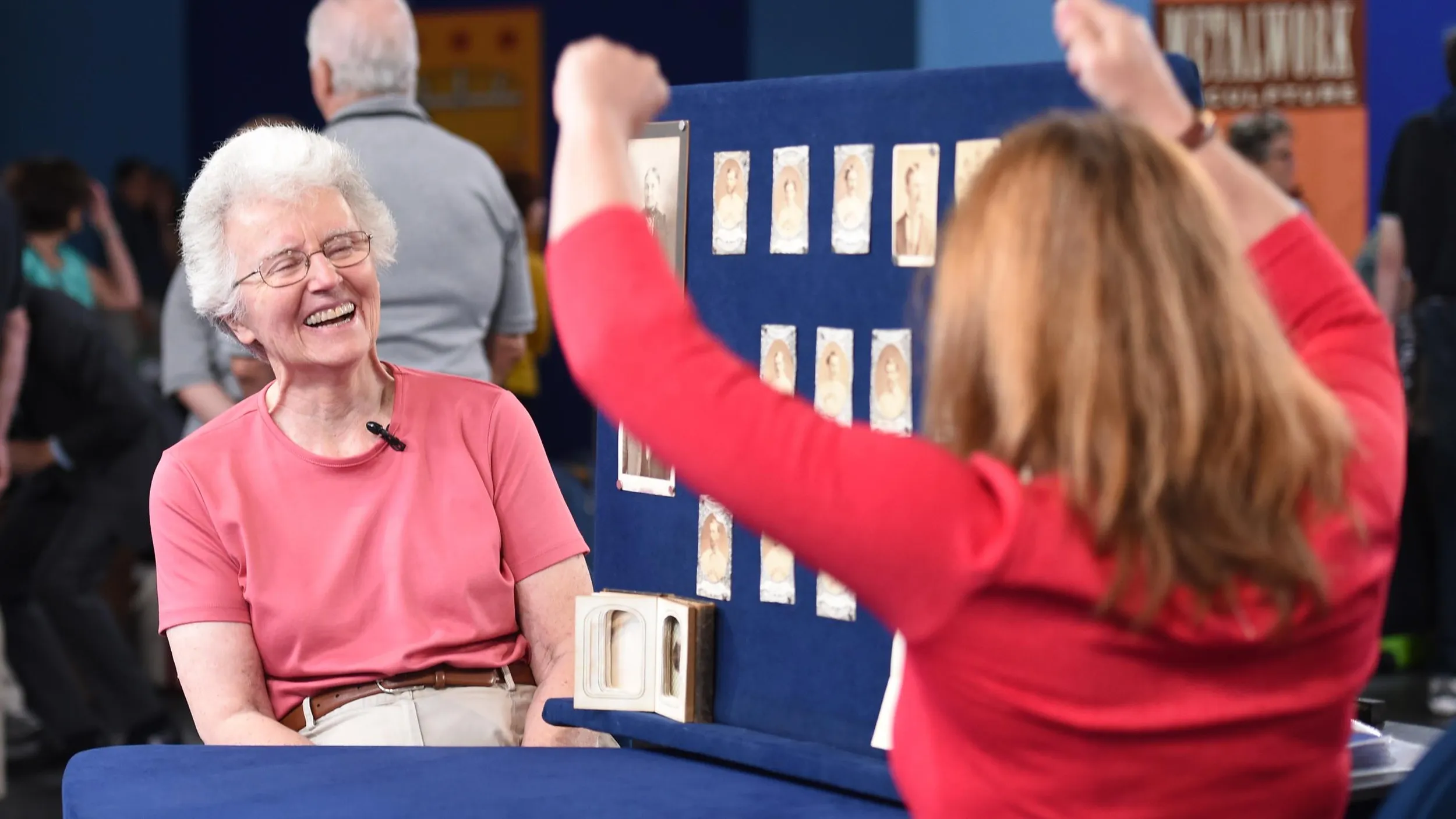GUEST: The first time I saw it, I thought it was perhaps from Nepal. I collect tribal art. I was attracted to it the moment I saw it, and the art dealer who had this piece said, "Do you know who Louise Nevelson is?" And I said, "It doesn't ring a bell, at first." He said, "She's only the most famous female American sculptor that there is." I said, "I believe you," I said, "but I'm more interested in the piece." He owed me a little money, I consigned tribal art to him from time to time, and we came to an agreement with a little cash and what he owed me, and I since have researched Louise Nevelson and now I know who she is. And he thought that this piece dated from the late '40s. It was a gift to her friend Flora Murrell, who lived down in Greenwich Village. And when she died, some of these pieces that were in her collection came out. And I did find a record of Flora Murrell selling two paintings from Louise Nevelson at auction some years ago. And in the auction records she states that it came directly to her from the artist.
APPRAISER: Okay, and so Louise Nevelson is considered one of the most important American female sculptors of the 20th century. And she was born in 1899. She was actually a Russian immigrant. And in the 1930s she was taking classes at the Art Students League of New York. And she had her first solo show in 1941. She's most widely known for these monumental cubist monochromatic pieces, generally made from found objects mounted onto boards. And you see huge ones in institutions and museums. There's a very large sculpture, which was then cast into bronze at Princeton University, and she's in many, many important museums around the world.
GUEST: I think there's a piece of hers on Park Avenue, if I remember correctly.
APPRAISER: That's correct.
GUEST: I knew her art, I didn't know her name.
APPRAISER: She's incredibly important. When pieces come up by her, people pay attention. In her early career she experimented with lots of different things. She experimented with painting and printmaking. We see those works come up for auction. And she also experimented with these smaller, almost tribal wood carvings. But then there's also this sort of cubist artwork being drawn into it as well. It doesn't quite look tribal. So it's really her experimenting with different forms. We know her first exhibition was in 1941. So I suspect this is a piece dating from the early 1940s, possibly as early as '41, but somewhere between 1940 and 1945. It's most likely carved out of pine, or another soft wood that has been ebonized or stained to give it this dark treatment. And that actually lends itself towards her later monochromatic pieces in black and white. It's not signed.
GUEST: No.
APPRAISER: But based upon the provenance and the information that you have of where it came from, I think anyone could strongly attribute this piece to her.
GUEST: That's great.
APPRAISER: How much did you pay for it?
GUEST: The total would have been $1,400.
APPRAISER: If this piece were to come up to auction today, I think a very reasonable estimate would be $12,000 to $18,000.
GUEST: Really?
APPRAISER: Yes.
GUEST: That I wasn't expecting. That's... that makes me happy, but I'm happy to have the piece.











